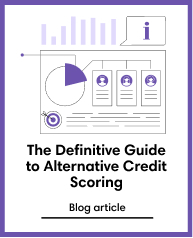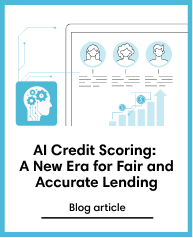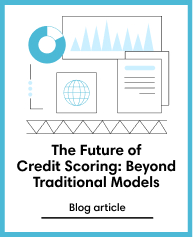Credit Scoring
Apr 30, 2021
Why does alternative credit scoring increase credit approval
Subscribe to our newsletter
The evolution of new ways of evaluating credit profiles through alternative data and machine learning mechanisms has generated a popular and positive impact in the financial circuit. Thanks to these new credit review processes, there has been a significant increase in the credit approval rate, which positively impacts social inclusion.
At present, traditional credit evaluation methods have become deficient since, in many regions, such as Latin America, a large percentage of the population is unbanked, resulting in limited traditional data available for a sound credit assessment. Given that many do not have a credit history, it is very difficult to determine the level of risk, and therefore, many are excluded from the financial system. Consequently, fintech around the world has begun to innovate to capture this segment of the market currently ignored but constituting a big opportunity for growth. These technological innovators are focusing on analysing data beyond the traditional system, and alternative data is trending as the new solution to the ever-present problem of financial exclusion.
The incorporation of alternative data for credit rating is quite novel. This new way of credit scoring with artificial intelligence has favoured banks and those who want to obtain a loan and become part of the economic circuit. According to Experian, an international consumer credit reporting consultancy, 65% of lenders have incorporated the use of alternative data. This has resulted in accurate reports and decisions with a lower risk rate than with traditional data.
In the United States, leading companies such as Experian and Equifax have joined the movement to embrace new alternative data sources to improve the risk assessment process. This major turnaround helped to encourage the industry to try using alternative data and thus participate more actively and competitively in the market.
When we discuss alternative data, we refer to all of those sources that have been incorporated into the market in recent decades unrelated to the traditional data sources. Their incorporation provides very accurate and real-time information about people's behaviour. Among these sources, we find information from digital payments - which are usually made through mobile applications- and information obtained from social networks, emails, satellites, and geolocation data.
The possibility of obtaining metadata through users' smartphones has opened the game to financial companies and, at the same time, has favoured the social inclusion of those who were outside the economic network. Thanks to alternative data, it is possible to anticipate movements and obtain more accurate patterns on the applicants' willingness to pay. It is now viable to carry out a more complete and updated credit scoring on clients and potential clients through behaviour prediction. In this way, banks and financial institutions can secure a reduction in the risk of credit default, strengthening algorithms that previously were solely based on traditional data.
By accessing a new credit history, with information that had not been recorded before, the credit approval rates have significantly increased and, thus, the new portfolio of clients. At the same time, the use of alternative data has generated a data network that fintech can share, allowing them to create predictive behaviour patterns for different industries.
The incorporation of alternative data with the use of artificial intelligence is without a doubt an opportunity that warrants growth for financial companies. It is a key turning point that recognises new clients who were previously considered unqualified. Thanks to this change in the credit scoring process, companies that have the power to adapt are guaranteed an increase in their credit approval rate through well-informed decisions.





